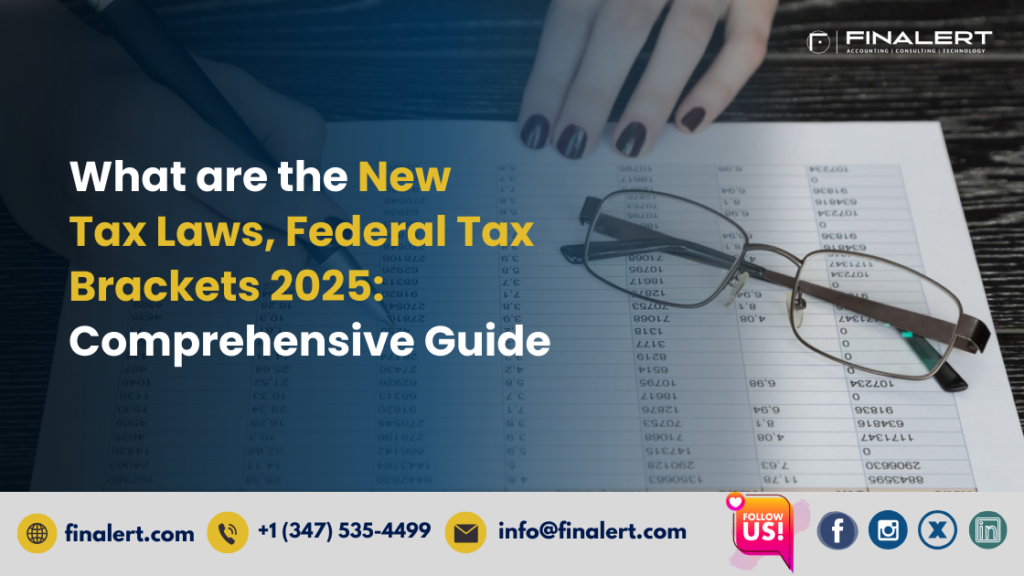
Each year, the IRS updates federal tax brackets to keep up with inflation, preventing what’s known as “bracket creep” where taxpayers end up paying higher taxes simply due to rising prices rather than actual income growth.
And 2025 is no different. The IRS has officially released the 2025 Federal Tax Brackets, adjusting income thresholds to align with economic conditions. But here’s the big question: Do these new tax laws work in your favor? Let’s break it down.
The US follows a progressive tax system. You will have higher tax rates for higher income levels. Yet, only the portion of income that falls into federal tax brackets is taxed at that rate (not your full salary).
Let’s explain it with an example. Assume that you’re a single filer earning $50,000 in 2025. Then:
Now, the IRS adjusted the tax brackets in the USA by 2.8% for inflation using the Chained CPI (C-CPI). It is a method that results in smaller increases than the traditional CPI.
| Tax Rate | Single Filers | Married Filing | Head of Household |
| 10% | $0 – $11,925 | $0 – $23,850 | $0 – $17,000 |
| 12% | $11,925 – $48,475 | $23,850 – $96,950 | $17,000 – $64,850 |
| 22% | $48,475 – $103,350 | $96,950 – $206,700 | $64,850 – $103,350 |
| 24% | $103,350 – $197,300 | $206,700 – $394,600 | $103,350 – $197,300 |
| 32% | $197,300 – $250,525 | $394,600 – $501,050 | $197,300 – $250,500 |
| 35% | $250,525 – $626,350 | $501,050 – $751,600 | $250,500 – $626,350 |
| 37% | More than $626,350 | More than $751,600 | More than $626,350 |
One of the biggest 2025 tax changes is the increase in the income threshold in every bracket. For instance, the 22% tax bracket began at $47,151 for single filers in 2024. But in 2025, it begins at only $48,476.
That’s a real money-saver for many middle-income salaried individuals. But high earners (those in the 35% and 37% brackets) won’t see much benefit in the new law about taxes, as their burden is almost unchanged.
The standard deduction 2025 rose slightly:
| Type | Deduction |
| Single filers | $15,000 (from $14,600 in 2024) |
| Married Filing | $30,000 (from $29,200 in 2024) |
| Head of Household | $22,500 (from $21,900 in 2024) |
Apart from all these, you can claim an extra $2000 (single filers) or $1,600 (joint filers) as a standard deduction if you are a Senior Citizen over 65 years of age.
Personal exemptions were removed according to the Tax Cuts and Jobs Act (TCJA) of 2017. That remains unchanged.
Just like personal exemptions, the child tax credit is also the same. It will continue at $2,000 (per qualifying child). $1,700 is refunded.
The Earned Income Tax Credit (EITC) is getting a nice bump for families with three or more kids. The maximum credit amount has been increased to $8,046 from $7,830 in the last year. That means eligible taxpayers could see about $200 more in their refunds next year.
2025 tax changes bring in slight reforms to retirement account limits. The contribution limit for 401(k) plans has been fixed at $23,500— increased from $23,000 in 2024. The same limit also applies to 403(b) plans and governmental 457 plans.
Similarly, a new provision under the SECURE 2.0 Act was introduced to allow citizens aged between 60 and 63 to have a standard catch-up contribution of up to $11,250. Yet, the figure remains the same for other individuals above 50 years — $7,500.
Qualified Business Income (QBI) is a provision that allows small-sized companies to have up to a 20% deductions. It was going to lapse this year. Recently, the authorities extended it up to 2025.
In the same manner, according to new tax policies, businesses earning less than $1 million are able to enjoy a flat tax regime. That eases their systems of tax calculation. Small firms no longer have to battle complex expense recording.

Long-term capital gains are taxed at up to 20%. The exact figure is based on your tax status and income level. Check out how it works:
| Tax Rate | Single Filers (Taxable Income) | Married Filing (Taxable Income) | Head of Households (Taxable Income) |
| 15% | $48,350 | $96,700 | $64,750 |
| 20% | $533,400 | $600,050 | $566,700 |
That being said, it is pretty clear that new tax laws treat long-term gains more fairly. But on the other hand, short-term investors don’t enjoy that.
Short-term capital gains are taxed at the same rate as regular income levels. If you are a single tax filer with an income of $50,000 per year, you will be charged 22% on the profits.
Estate and gift tax exemption is set at $13.99 million per individual— a sharp increase from $13.61 million in the last year. The current figures are as high as $27.98 million for families. However, it is expected to fall to $7 million per individual (almost half) in 2026.
Earlier, you did not need to pay taxes for gifts purchased for the first $18,000. Now, the amount has increased to $19,000. Similarly, gifts worth up to $190,000 to non-US spouses are also exempted from taxes (the figure was $185,000 in 2024).

In fact, the IRS has introduced many plans to reduce the tax burden on citizens. You can keep more of your hard-earned money with proper tax planning. Check out some strategies for that:
Have a look at some tips to make use of tax deductions and credits effectively:
Many of the best tax resolution companies advice businesses to adopt tax-effective investment strategies to optimize after-tax returns:
In short, the new tax laws leave out many provisions for businesses to retain more of their profits. For instance, Section 179 lets you claim a deduction of up to $1.25M for some equipment purchases. That means you can invest in new equipment without worrying about long-term depreciation costs eating into their profits. On top of that, bonus depreciation still applies to allow an additional deduction on qualified assets.
That’s just the tip of the iceberg. You can get in touch with some reputed business tax services to make the most out of such provisions.
Still, managing taxes on your own? You might be leaving your hard-earned money behind.
Remember, tax laws update annually. In the absence of professional advice, you might be missing out on advantageous credits and deductions that you deserve. That’s where you need a registered tax consultancy firm.
At Finalert, we make tax planning way easier. Our experienced professionals will guide you on how to get the most savings and stay compliant. Get expert help now!
Similar Articles
No results available
Get in touch with Finalert today for tailored business solutions!
No results available
Ready to thrive? Connect with Finalert today and let’s succeed together in the dynamic global market.
© 2025 Finalert. All rights reserved.
Ready to thrive in the dynamic global market? Finalert LLC offers expert financial services, including accounting, consulting, and technology solutions, tailored to your business needs.
Address
Accounting
Quick Links
Consulting
Industries
© 2025 Finalert LLC. All rights reserved.